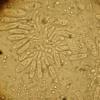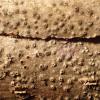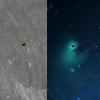
02-01-2026 17:43
MARICEL PATINOHi there, although I couldn't see the fruitbody, I

01-01-2026 18:35
Original loamy soil aside a artificial lake.The co

31-12-2025 19:27
Collected from loamy soil, at waterside (completel

30-12-2025 16:44
Pascal DucosBonjour,Une anamorphe rose stipitée, très nombre

30-12-2025 17:14
 Bernard CLESSE
Bernard CLESSE
Bonjour à toutes et tous,Pourriez-vous aider Albe
Pyreno on Fraxinus excelsior.
Per Marstad,
16-03-2019 18:39
On the bark of Fraxinus, small, ca 1 mm.
Konidia 25 - 28 x 12 my.
It is nice with a name.
Per.
Chris Yeates,
16-03-2019 18:50

Re : Pyreno on Fraxinus excelsior.
Viktorie Halasu,
16-03-2019 21:20

Re : Pyreno on Fraxinus excelsior.
Dear Chris,
I'd like to ask, what's the difference between Macrophoma fraxini and Diplodia fraxini (or rather D. mutila, without brown conidia)?
Thank you in advance.
Viktorie
https://www.researchgate.net/publication/260591572_The_complex_of_Diplodia_species_associated_with_Fraxinus_and_some_other_woody_hosts_in_Italy_and_Portugal
I'd like to ask, what's the difference between Macrophoma fraxini and Diplodia fraxini (or rather D. mutila, without brown conidia)?
Thank you in advance.
Viktorie
https://www.researchgate.net/publication/260591572_The_complex_of_Diplodia_species_associated_with_Fraxinus_and_some_other_woody_hosts_in_Italy_and_Portugal
Chris Yeates,
16-03-2019 21:29

Re : Pyreno on Fraxinus excelsior.
They may represent the same thing as far as I know. "Coelomycetes" can be a taxonomic minefield, crying out for more molecular work.
Viktorie Halasu,
16-03-2019 21:39

Re : Pyreno on Fraxinus excelsior.
Yes, there's also a paper "Relationship of Macrophoma and Diplodia" (1904) by J.T.Emerson who obtained both types of conidia from a single pycnidium. That's why I was asking, to see if there's a molecular work on them.
By the way, my collections identified as Diplodia (fraxini or mutila, I'm still not sure how to distinguish them without dark brown conidia abundantly present) released a pigment into water or KOH mount, hyaline in visible light, but bluegreen in UV 365 nm. (The dark blue background is an artifact, I probably forgot to use UV filter.)
Correction: the UV+ water-soluble pigment it's actually not from the fungus, but from upper layer of Fraxinus bark. :-/ Sorry for not checking that before.
By the way, my collections identified as Diplodia (fraxini or mutila, I'm still not sure how to distinguish them without dark brown conidia abundantly present) released a pigment into water or KOH mount, hyaline in visible light, but bluegreen in UV 365 nm. (The dark blue background is an artifact, I probably forgot to use UV filter.)
Correction: the UV+ water-soluble pigment it's actually not from the fungus, but from upper layer of Fraxinus bark. :-/ Sorry for not checking that before.






